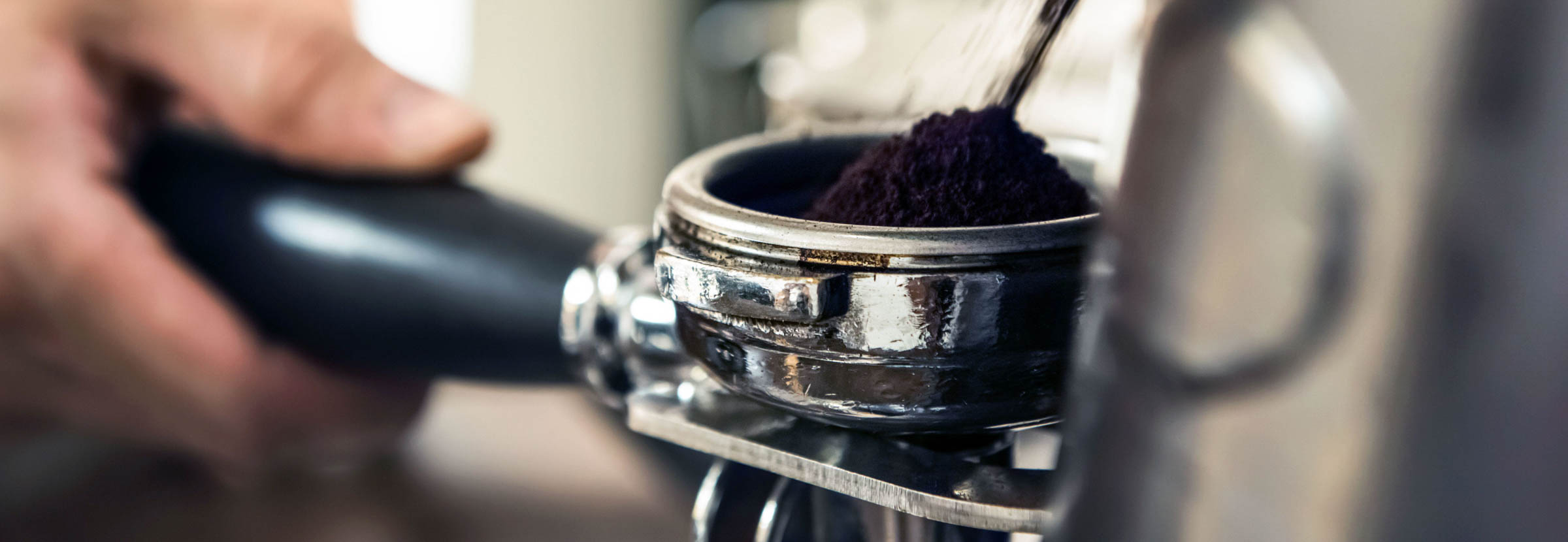Spraying coffee with water might improve extraction – but it’s not exactly practical
There are many ways to improve espresso extraction, ranging from different distribution techniques to proper grooming and tamping methods. And baristas should implement these practices on top of controlling an already large number of variables, including dose, yield, extraction time, and temperature.
Additionally, there is another practice that coffee professionals and enthusiasts have been using for some time now to assist with espresso (and filter) preparation: the Ross Droplet Technique (or RDT). Quite simply, it involves spraying roasted coffee with water prior to grinding.
We have known for quite some time that the RDT helps to reduce static during the grinding process. But more recently, a newly published study indicates that this practice can improve the ability to extract more “favourable” flavours.
While this could certainly be true, one question still remains – is it really that practical for coffee shops to carry out?
To find out, I spoke to Christopher Hendon, Associate Professor at the Department of Chemistry and Biochemistry at the University of Oregon.
You may also like our article on channelling and how it affects espresso extraction.

What exactly is the Ross Droplet Technique?
Although the exact origins are hard to verify, it’s believed the RDT was first developed by coffee professional David Ross in 2005. It then took several years for the practice to be more widely adopted, particularly in the home barista community.
The method itself is very simple. Most people place the handle of a spoon (or a similar utensil) under running water and then use it to stir their dose of roasted coffee beans. In theory, this evenly distributes the water droplets across the surface of the beans.
As well as being an Associate Professor at the University of Oregon, Christopher Hendon is also a co-author of Water for Coffee. He explains one of the biggest impacts of adding a very small amount of water to roasted whole bean coffee.
“It reduces the surface charging, which decreases both the mess made on the counters and grinder retention to almost zero,” he tells me.
Whether you’re a barista or a home brewer, you will have certainly encountered ground coffee either clinging to the grinder chute or dispenser chamber, or ending up on the counters. This is because there is an imbalance between the charge of the particles in the coffee and in the grinder – which means they repel one another.
By adding water (but always in very small amounts), however, the static charges are conducted more easily – which reduces grind retention and mess.
Does it help improve extraction?
Many coffee professionals and enthusiasts can attest to the benefits of the RDT in terms of reducing static build up – and thereby minimising waste. But what about improving extraction?
According to a recent study published in Matter, the addition of water – by spraying the beans once – prior to grinding can help extract more desirable flavours. The research team (which included Christopher) used a range of roast profiles and categories the coffees into three different groups:
- Natural
- Washed
- Decaffeinated
After calculating the electrical charge of all the coffees, the researchers measured how much electrical static accumulated on each dose once ground using a Mahlkönig EK43.
Christopher mentions other findings which the team picked up on: “When adding sufficient water, particle size distribution changes, which in turn impacts flow rate.
“The effect is more pronounced for more charged and drier coffees, such as darker and espresso roast profiles,” he adds.

Can coffee shops actually use the RDT effectively?
Across the board, very few coffee shops use the RDT when preparing both espresso and filter – although it’s more commonly used for the former because of finer grind sizes.
Following one of James Hoffmann’s YouTube videos released in 2017, however, the practice is fairly popular with home baristas who have much more capacity to carry it out.
In response to the Matter study, one of Hoffmann’s latest videos tests the RDT using different grinders with around four sprays of water per dose (around 18g), but found significantly different results between various brands and models. While there certainly is the need for more controlled studies, this indicates that results may not always be consistent.
Additionally, the practice of either spraying or stirring each dose just before grinding could be too time consuming – especially during busy rushes.
“Implementing the RDT in a coffee shop setting may be limited to places which only pre-dose and then use single-dose grinders,” Christopher says. “At least for now anyway – until someone adapts the process to be more suitable for on-demand grinders.”

In the quest to perfect espresso extraction, there’s no doubt the Ross Droplet Technique could help baristas and home brewers. There are, however, many more important variables to consider which have more of an overall impact.
And as for carrying it out efficiently and consistently in coffee shops, it doesn’t seem particularly likely for now.
Enjoyed this? Then read our article on how coffee shops can use espresso machine technology to their advantage.
Perfect Daily Grind
Want to read more articles like this? Sign up for our newsletter!




